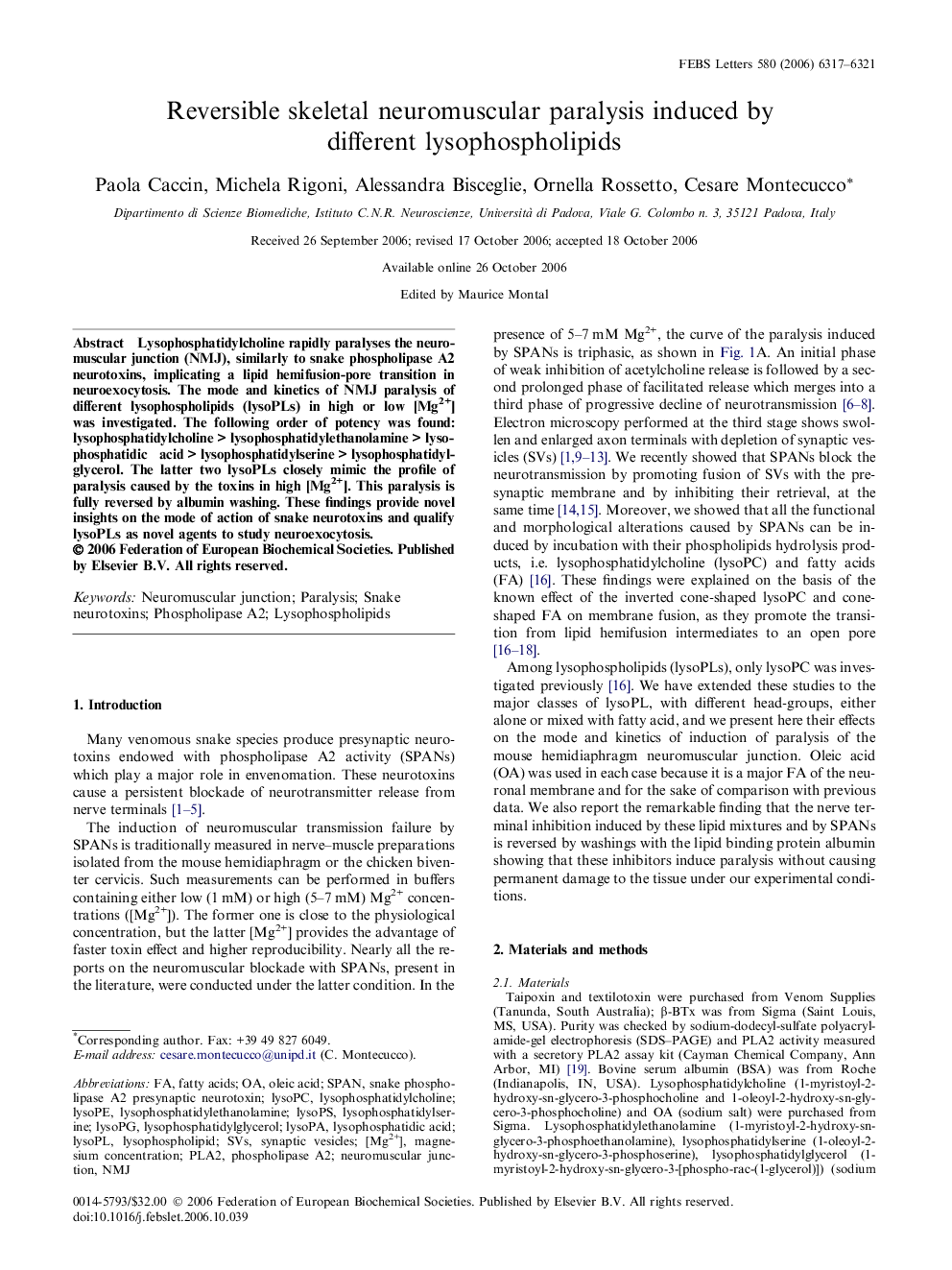| Article ID | Journal | Published Year | Pages | File Type |
|---|---|---|---|---|
| 2052329 | FEBS Letters | 2006 | 5 Pages |
Lysophosphatidylcholine rapidly paralyses the neuromuscular junction (NMJ), similarly to snake phospholipase A2 neurotoxins, implicating a lipid hemifusion-pore transition in neuroexocytosis. The mode and kinetics of NMJ paralysis of different lysophospholipids (lysoPLs) in high or low [Mg2+] was investigated. The following order of potency was found: lysophosphatidylcholine > lysophosphatidylethanolamine > lysophosphatidic acid > lysophosphatidylserine > lysophosphatidylglycerol. The latter two lysoPLs closely mimic the profile of paralysis caused by the toxins in high [Mg2+]. This paralysis is fully reversed by albumin washing. These findings provide novel insights on the mode of action of snake neurotoxins and qualify lysoPLs as novel agents to study neuroexocytosis.
